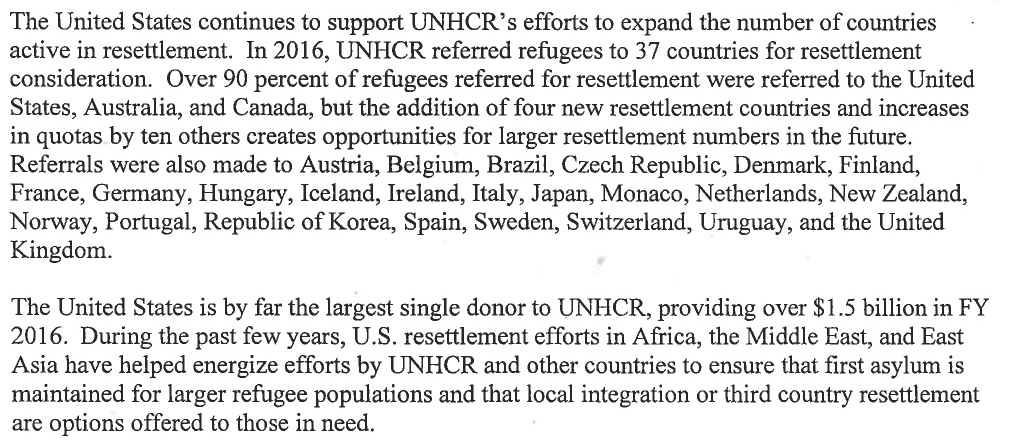Twenty-one U.S. diplomatic personnel assigned to Cuba have been severely affected by some health condition with the cause still unknown officially. Secretary of State, Rex Tillerson has issued travel warnings to Cuba for civilians and has ordered a large number of government personnel to leave the island. Cuba is allegedly cooperating in the investigation and for more than a year, there have been no clues or resolutions. The FBI additionally sent an expert team to Havana to investigate all associated locations including the housing where these attacks have occurred. The housing for diplomatic personnel is provided by Cuba and as with all laws and standards, the host country must provide safe conditions and be approved by the U.S. State Department.
 photo
photo
So, what are the likely explanations for U.S. personnel and Canadian personnel suffering from hearing loss, brain damage and even speech complications?
Well as submitted by former CIA official John Sipher, who has served in some hostile nations does offer some explanation(s) as to what those nations have history done to U.S. facilities.
During my time overseas, I have had personal experience with several of these “attacks.” In the 1980s and 1990s, the Soviet and then Russian intelligence services deployed doses of nitrophenyl pentaden (NPPD) against American diplomats whom they suspected of managing espionage operations against Russian interests. This so-called “spy dust” was an invisible electromagnetic powder with a customized chemical identifier. It was smeared onto door handles, furniture and cars of suspected American spy handlers. It was a tagging agent used by Russian security elements to covertly monitor their own community by revealing unreported (and potentially espionage related) contacts between Russian and American officials. It was somewhat ingenious. After deploying the invisible material on a suspected U.S. intelligence officer, Russian counter-intelligence would snoop after-hours through the offices of Russian government employees looking for traces of the material. Discovery of the powder in the office of someone who had not reported contact with the American provided significant proof of suspicious activity.
What was not ingenious, however, were the threats to human health. There were concerns at the time that the material was carcinogenic and could be harmful to American diplomats. Following studies, the United States determined there was no specific evidence of a threat to the U.S. diplomatic community since it was only used against a handful of people. As someone who was “dusted,” that explanation didn’t really make me feel much better. However, the substance was at least a step up from earlier Russian tracking devices like radioactive nails hammered into the tires of U.S. diplomatic vehicles, allowing Russian surveillance vehicles to hang back unseen and follow along by using special equipment to track targets’ tire residue.
The Russian security services were also known to flood the U.S. embassy in Moscow with electromagnetic radiation. They would beam concentrated microwaves and electronic pulses at the Embassy in an attempt to eavesdrop on U.S. typewriters and conversations. In the 1970s, a U.S. Ambassador contracted and died of a blood disease that many assumed to be a result of the attacks. The State Department detected high levels of radiation in the embassy staff, and provided hazard pay to personnel who worked in Moscow. A variety of electronic attacks continued over the years to include mobile Russian vans that acted as a giant x-ray that could be directed at diplomats all over town. In a similar fashion, high frequency devices can be used to pulse other devices, perhaps turning on or off collection devices in homes or offices.
Similarly, the Russian security services undertook a massive effort to bug the new embassy building in Moscow with all sorts of technical gear, some of which could potentially affect the health of Americans. Indeed, the new embassy construction was even abandoned in 1985 due to the sheer volume and sophistication of electronic eavesdropping equipment that was found throughout the walls, concrete floors and underground. A second attempt to improve the security of the building also faltered when the United States found an equally aggressive and sophisticated attack, which included building listening devices directly into the steel beams holding the building upright. Even the sidewalks and streets throughout the neighborhood were embedded with electronic collection gear which was designed to turn the embassy building into a giant antenna. The United States lost hundreds of millions of dollars trying to fix the problems, and eventually tore off the top several floors of the Embassy and rebuilt it with specially imported materials put together by American-only labor – an effort the U.S. called the “Top Hat” solution. The decades-long process displayed the remarkable expertise of the Russians in the use of technical sensors and surveillance gear. Russian technology was consistently underestimated by the U.S. and often our best scientists had difficulty understanding what the Russians were up to. Full article here.
 photo courtesy CBS
photo courtesy CBS
Could Mr. Sipher be missing something or omitting something? Yes.
There is something called vibroacoustic syndrome—the effect of infrasonic output not on your hearing but on the various fluid-filled parts of your body, which can affect hearing and loss of balance.
The low frequency of infrasonic sound and its corresponding long wavelength makes it much more capable of bending around or penetrating your body, creating an oscillating pressure system. Depending on the frequency, different parts of your body will resonate, which can have very unusual non-auditory effects. For example, one of the ones that occur at relatively safe sound levels (< 100 dB) occurs at 19Hz. If you sit in front of a very good-quality subwoofer and play a 19Hz sound (or have access to a sound programmer and get an audible sound to modulate at 19Hz), try taking off your glasses or removing your contacts. Your eyes will twitch. If you turn up the volume so you start approaching 110 dB, you may even start seeing colored lights at the periphery of your vision or ghostly gray regions in the center. This is because 19Hz is the resonant frequency of the human eyeball. The low-frequency pulsations start distorting the eyeball’s shape and pushing on the retina, activating the rods and cones by pressure rather than light.* This non-auditory effect may be the basis of some supernatural folklore. In 1998, Tony Lawrence and Vic Tandy wrote a paper for the Journal of the Society for Psychical Research (not my usual fare) called “Ghosts in the Machine,” in which they describe how they got to the root of stories of a “haunted” laboratory. People in the lab had described seeing “ghostly” gray shapes that disappeared when they turned to face them. Upon examining the area, it turned out that a fan was resonating the room at 18.98Hz, almost exactly the resonant frequency of the human eyeball. When the fan was turned off, so did all stories of ghostly apparitions. More here.
Going back as far as 1998, the Foreign Military Office at Fort Leavenworth published a short summary of what was described then as ‘wonder weapons’. In part:
A recent edition of U.S. News and World Report highlighted several of these “wonder weapons” (acoustics, microwaves, lasers) and noted that scientists are “searching the electromagnetic and sonic spectrums for wavelengths that can affect human behavior.” 3A recent Russian military article offered a slightly different slant to the problem, declaring that “humanity stands on the brink of a psychotropic war” with the mind and body as the focus. That article discussed Russian and international attempts to control the psycho-physical condition of man and his decision making processes by the use of VHF-generators, “noiseless cassettes,” and other technologies.
An entirely new arsenal of weapons, based on devices designed to introduce subliminal messages or to alter the body’s psychological and data processing capabilities, might be used to incapacitate individuals. These weapons aim to control or alter the psyche, or to attack the various sensory and data-processing systems of the human organism. In both cases, the goal is to confuse or destroy the signals that normally keep the body in equilibrium.
This article examines energy-based weapons, psychotropic weapons, and other developments designed to alter the ability of the human body to process stimuli. One consequence of this assessment is that the way we commonly use the term “information warfare” falls short when the individual soldier, not his equipment, becomes the target of attack.
A 2014 study in the journal Royal Society Open Science found that low-frequency sounds below the audible range could disrupt little whistles made by the ear, called spontaneous optoacoustic emissions, in response to noise. (How that mapped to symptoms, however, wasn’t clear.)
In this instance, one possibility is that the infrasound stimulated the part of the ear not dedicated to hearing — the vestibular system that controls balance, Liberman said. In that instance, the symptoms wouldn’t appear immediately.
“You could imagine them being very slow onset and very persistent,” Liberman said. “It might take days before you even notice any funny sensations.”
Sonic weapons
While the idea of a silent sonic weapon sounds like something out of James Bond, Inspector Gadget or the reject pile of DARPA, the idea of using sound as a weapon has a long history.
For instance, studies show that animals exposed to high-intensity, focused ultrasound can experience lung and brain damage. And a cruise line circling the pirate-infested waters off the Somali coast has taken to using a military-grade “sonic weapon” to deter would-be hijackers, the BBC reported. This long-range device, also known as a sound cannon, can cause permanent hearing loss at distances of up to 984 feet (300 meters), according to the BBC. Other companies have developed a magnetic acoustic device, commonly referred to as a sound laser , that deploys incredibly painful, focused beams of sound to deter people from an area, NPR reported. The Israeli army has also used a device known as “The Scream,” which damages the inner ear, causing nausea and dizziness, Wired reported. More here from FNC.
There is more going on than is being reported. Further, I would be asking all allied nations to Cuba that have access to Cuba what they know and I would be challenging all SIGINT communications on the island…surely there is chatter about this very event. Since there are some Canadian personnel involved, has Canada made any inquiries and launched investigations? Crickets…








 photo courtesy CBS
photo courtesy CBS